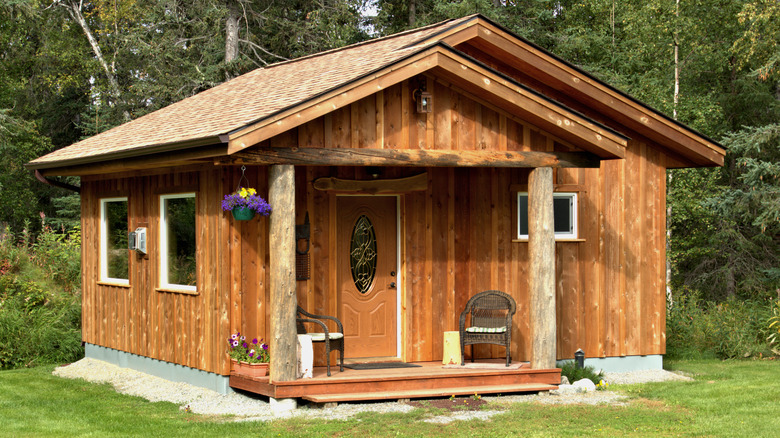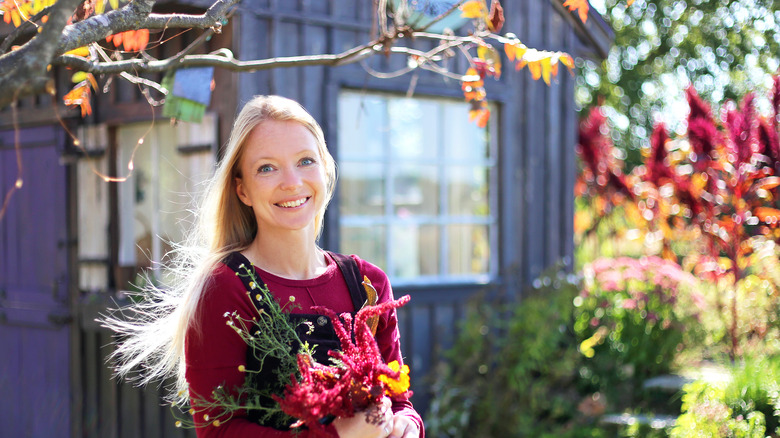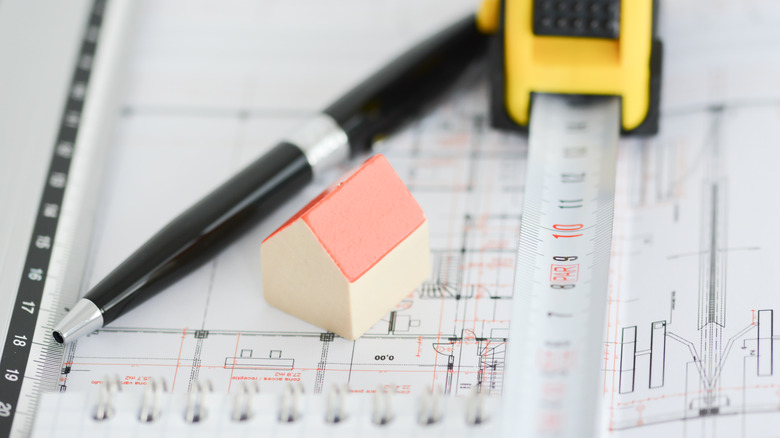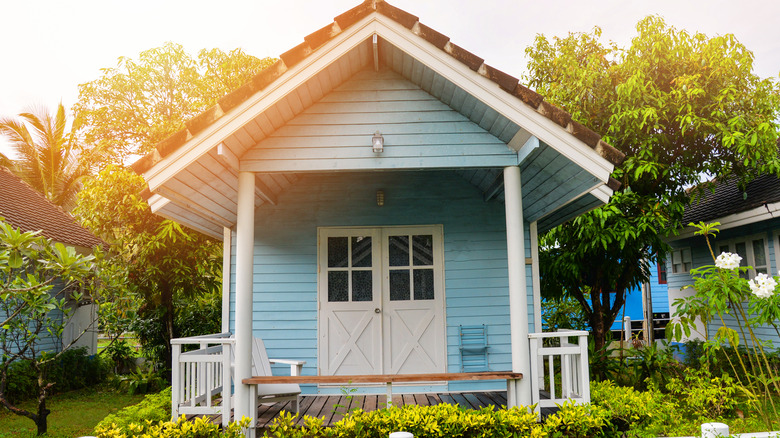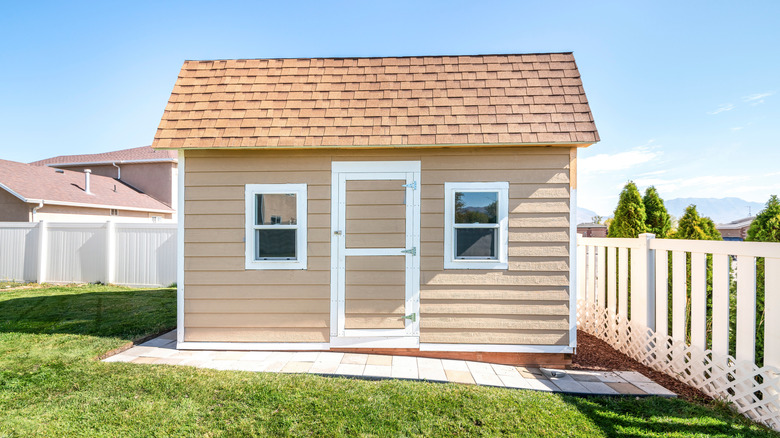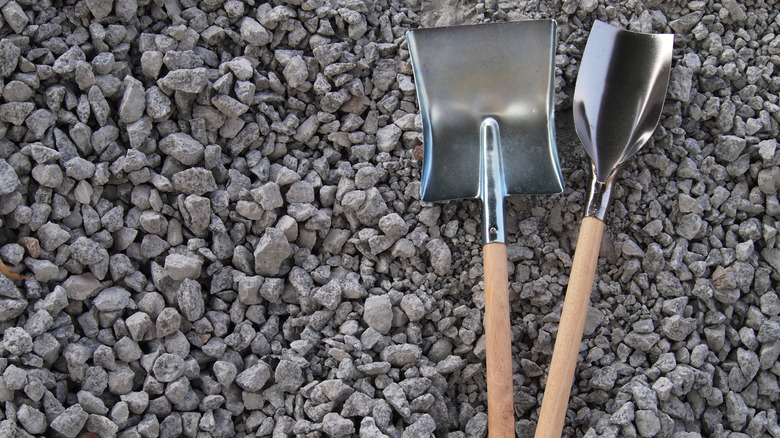How To Turn Your Backyard Shed Into A Tiny Home
Do you dream of renovating your backyard shed into a tiny home? Or maybe you need a livable add-on to your property? There are many reasons why you might consider converting your shed into a more functional living space such as a guest house, man cave, she shed, classroom, or playhouse. In the past, small additional houses, like English follies, were often used by the wealthy as representations of ancient ruins or landmarks instead of being used for storage. Today, sheds serve a practical purpose, as they are commonly utilized to store tools, garden supplies, lawn equipment, or other domestic items that require larger accommodation.
It's important to establish whether you're going to renovate your existing structure or build a new one. According to The Tiny House, purchasing a shed may be cheaper and more efficient in quality compared to purchasing a pre-built shell. Other important factors are to determine your budget and timeline. Is this a practical project or a mandatory change? Depending on the size, materials, labor, and installation, the cost of turning your backyard shed into a tiny home may range from $1,500 to $30,000, per Budget Dumpster. Whether it's a conversion or a brand-new structure, how you plan to transform your backyard shed will ultimately depend on the style and materials chosen. Read on to learn more about how to turn your backyard into a new living space!
Why you should turn your shed into a tiny home
Often used for storing lawnmowers and other home and garden tools, your tiny shed may also be an innovative living space. The popularity of transforming backyard sheds into little homes has grown over the last few years. Based on a 2018 survey from the National Association of Home Builders, more than half of Americans stated they would contemplate living in a tiny home, per RealEstate by Boston.
If you need to construct an additional living space on your property, renovating your small shed will inevitably be cheaper than building a larger suite or building. Whether the result is something temporary or long-term, this is your chance to branch out and get creative. Consider the pros and cons of the overall project goals by examining total cost, labor, and time. Additionally, it's vital to decide early whether it's going to be a personal or professional project, as some parts of the project may require some outside expertise. All of this will help initiate the process from a backyard shed to a new operative home.
Make certain your location is legal
Is converting a backyard shed into a small home permissible? Potentially. Before you get started on your home shed project, it's important to check with your city building codes department or county zoning laws. Many areas request that a "home" should contain these four basic living requirements: air, electricity, heating, and plumbing, per Plasticine House. Although some zones might restrict electrical wiring inside a shed, including other common restrictions related to severe weather or size and placement of the structure. Make sure you obtain all the required building permits before the construction starts.
Occasional sleepovers or downtime may be permitted in the cozy shed (without it being inhabited), but you should check with your permitted development rights, including HOA or Historic Preservation District, per Take a Yard. Some locations may require a permit for this type of use of a small building and request evidence that it's still being used for storage as well.
Establish a budget: DIY or hire a professional
Before you start, determine what your project goals are for your home shed. Will you be doing do-it-yourself or require professional help? Although saving money is important, so is efficiency. According to MaterialSix, you may be able to take on most of the job on your own with minimal help, but you might consider hiring a professional service when it comes to the wiring, drainage, and plumbing. Expect to pay at least $50 to $100 per hour for labor costs. You might also hire an interior designer that specializes in small spaces. Depending upon their experience, they might charge between $100 to $200 per hour, not including the price of furniture.
Once decided, put your budget in place. The average cost may range from $1,800 to $9,500, or $20 to $175 per square foot if building a shed from scratch, per LawnStarter. Small-scale sheds will inevitably be cheaper than larger-scale models, as will whether it's a bespoke design and the quality of materials, which could range anywhere from $400 to $30,000.
Designing your tiny home shed
Depending on how decorative you plan to make your tiny home shed, there may be several amenities to include in the final design. Interior details to consider are the layout, style, decoration, paint, and supplies, including the potential necessity for fans, lighting, a kitchen, bathroom, appliances, electronics, or the installation of flooring and windows. Another prospect to ponder is landscaping; will you need to spruce up the exterior surroundings of the structure? You might add new sod, a garden, flowerboxes, décor, shutters, lighting, or any other items to upgrade the appearance of the small house.
When it comes to heating and cooling, a small heater and air conditioner might be applied. For moderate climates, insulation may only be necessary rather than incorporating a larger system. According to Shed Solutions, fiberglass is a common choice of insulation used for sheds, as it's highly capable of regulating warm and cold temperatures. You might install sheets of insulation (including in the ceiling) and cover them with drywall. You could also use a bat or spray foam. Insulating the shed floor is also important. Do this by adding it under the floor on the bottom of the shed or lay foamboard on the floor while placing a new layer of plywood on top of that, per The Tiny Life. Use 2x4 framing; this is the ideal thickness to fit an appropriate amount of insulation in maintaining the house's warmth during the cold months.
Types of tiny home sheds
Whether you turn your backyard shed into a guest house or use it for personal reasons, here are the four main types of shed materials to choose from: brick, metal (steel), vinyl, and wood. According to Go Downsize, plywood is the most used material as a frame building resource for sheds. Dimensional lumber is perfect for small structures, as it can be cut and fit to your specifications. Besides being affordable and lightweight, vinyl comes as basic as you want or in various wood-like patterns. Greatly moisture resistant, the biggest advantage with vinyl siding is that it won't rot or rust over time, per Tiny House Bloom. The option of steel is undeniably strong, especially compared to wood. Steel is durable and can easily face the elements, including fire, mold, and pest damage. Brick is another sturdy option but may be more expensive and require an experienced brick mason to build with it.
Another option is a pre-built shell. This is a good selection since the structure itself is already made, but you also want to consider the additional labor that comes with transporting it to your place of residence. On the flip side, a pre-built shell may not fit right within the legal limit of a trailer as well, so make sure you have an appropriate way of transportation to bring it home, per Tiny House Design.
Clean, prepare, and repair
If renovating your existing shed, make improvements by examining it inside and out. Start by cleaning it thoroughly, then seal up any visible air leaks or cracks, especially in the prevention of bugs, drafts, pests, weather-related damage, and other possible outcomes. Additionally, make sure the walls are secure with screws placed tightly. Make sure the ground is level if utilizing a new structure. Scrape the grass away and place 4 to 6 inches of ¾- inch gravel to cover the surface area of the shed, per The Tiny Life. Also, be mindful of how rainwater will travel off the roof. If you have gutters, you might want to install a drainpipe to help with the flow of water off the roof of the tiny home.
After your home shed has passed inspections, the next thing to do is to set up your utilities, which include power, sewer, and water. You may want to hire a professional electrician or plumber. Make sure to test everything before finalizing the walls and outlets. Installing plenty of outlets is also crucial during the process, as it might be more of a challenge to include more later. Finally, connect electrical and water lines, internet connections, and HVAC (heating, ventilation, and air conditioning). From there, add drywall and baseboards, including all your amenities and features.
